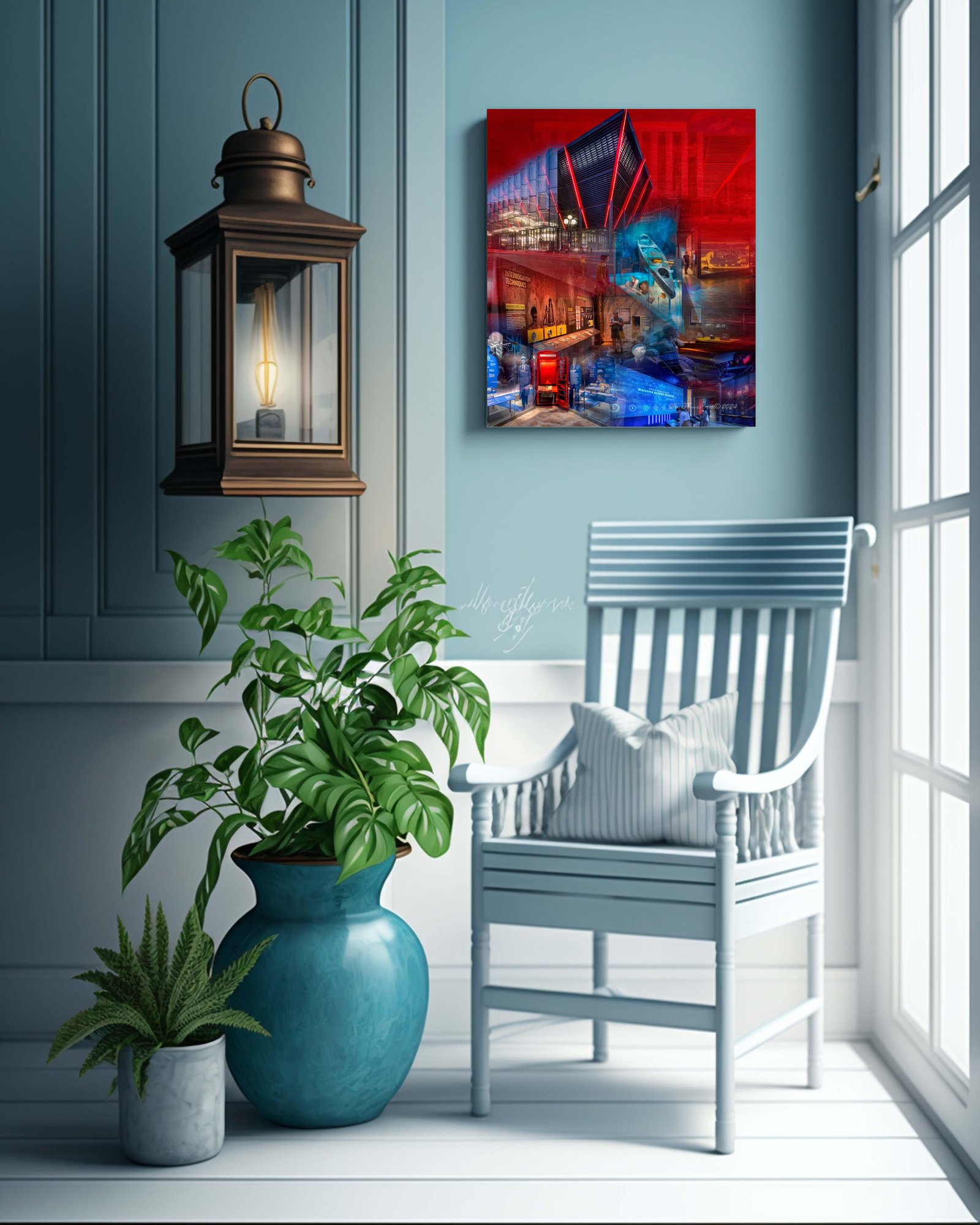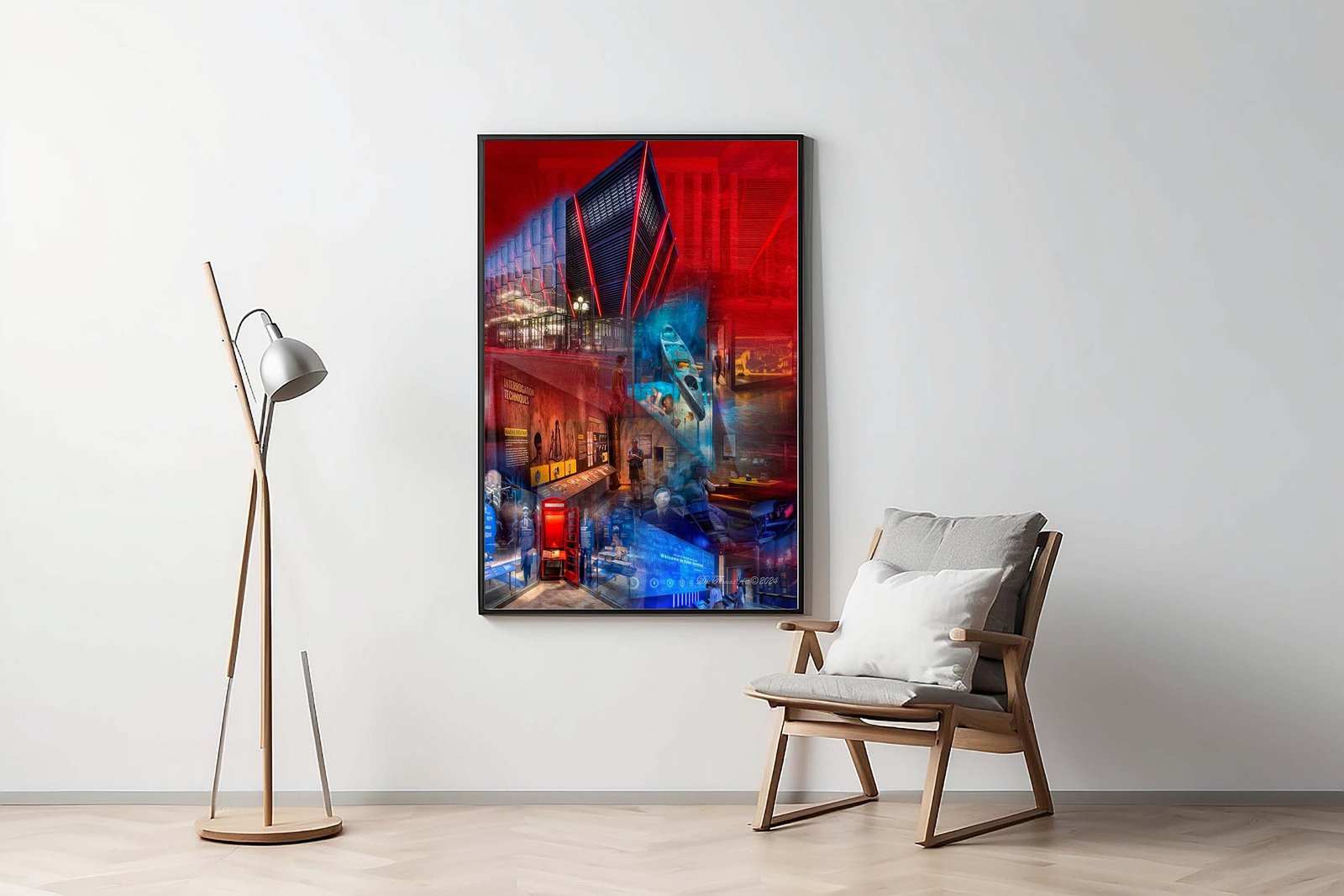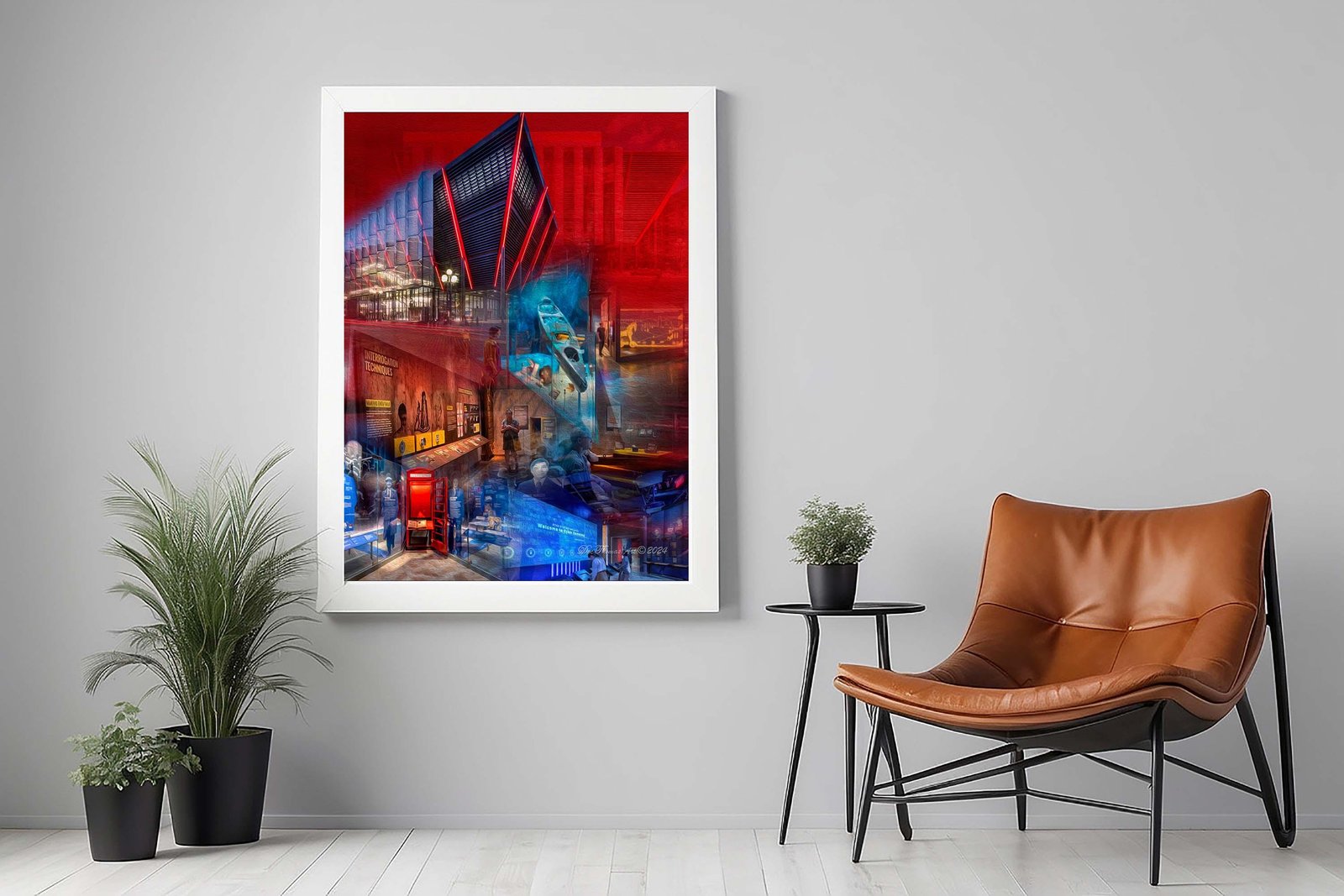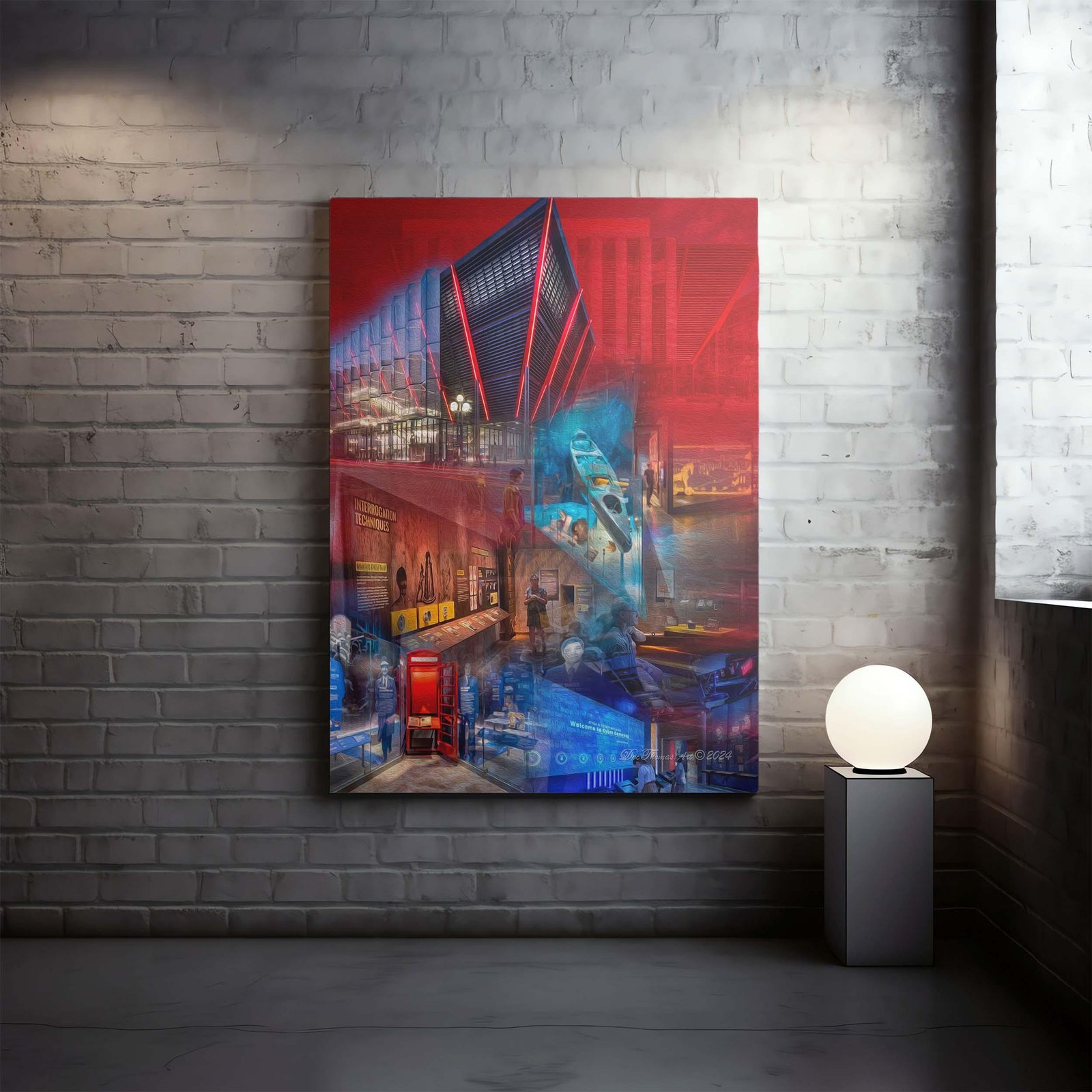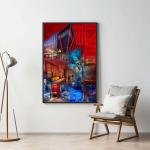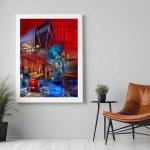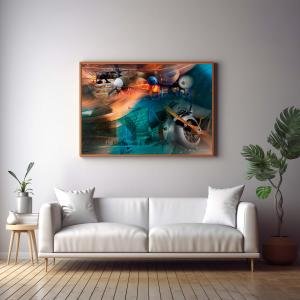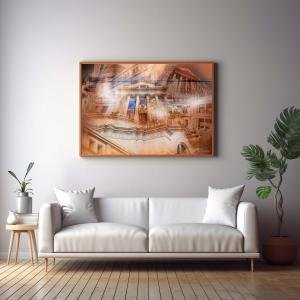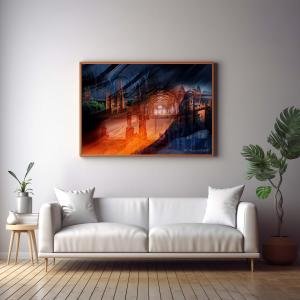The Shadows We Don’t See: Unveiling the World of Espionage
"The Shadows We Don’t See: Unveiling the World of Espionage" is an immersive digital collage that captures the hidden world of intelligence, secrets, and espionage. The International Spy Museum , an architectural marvel in Washington, D.C., forms the backdrop of this piece. With its sharp, angular design and vibrant red lines, the museum itself is a testament to the cutting-edge technology and high-stakes environments that define modern espionage. The museum, which opened its doors in 2002 and later relocated to its new home in 2019 , is a hub of information and artifacts from one of the most secretive industries in the world.
Please see Below for Details…
Hotline Order:
Mon - Fri: 07AM - 06PM
404-872-4663
One of the most striking elements in this artwork is the Interrogation Techniques Exhibit. This exhibit brings visitors face-to-face with the psychological pressures and tactics used by intelligence agencies to extract information from suspects. The dim lighting and stark walls evoke an unsettling atmosphere, echoing the moral ambiguities of these covert operations. The harsh truth of espionage is laid bare in this part of the museum—intelligence isn’t just about gadgets and stealth; it’s about the mental warfare that often accompanies these missions.
The Red Telephone Booth, tucked in a corner, is a subtle yet poignant nod to British intelligence, particularly the world of MI6 and the famous spy, James Bond. The booth, once a commonplace object in London streets, now serves as a symbol of covert communication in the intelligence community. It represents a time when agents had to operate in the shadows, using simple yet effective means to avoid detection. The booth's red hue not only stands out visually but also represents urgency, danger, and the critical nature of communication in the spy world.
Moving deeper into the image, we find an exhibit of Spycraft and Surveillance Displays, showing the tools used in intelligence gathering—from hidden cameras to wiretapping devices. This portion of the museum gives visitors insight into the sophisticated technologies developed to gain information without an enemy's knowledge. The image of these tools reminds us that espionage is a field constantly evolving alongside technology. From miniature cameras disguised as everyday objects to the advanced cyber tools used today, the art of spying is as much about innovation as it is about stealth.
In the center of the image, a Submarine Exhibit floats in a pool of eerie blue light. Submarines have been used throughout history to conduct covert underwater missions, often to gather intelligence or deploy spies in enemy territory. This exhibit offers a glimpse into the world of underwater espionage, where the risks are as high as the stakes. The deep blue tones in this section symbolize the depth of secrecy involved in these missions, the isolation felt by agents on covert operations, and the vast, unseen world of intelligence gathering that takes place beneath the surface of everyday life.
The Interactive Displays scattered throughout the museum give visitors the chance to step into the shoes of a spy. The glowing blue lights reflect the cold, calculated precision needed in espionage, while the red accents evoke a sense of urgency and danger. Together, these colors create an atmosphere of suspense, representing the two sides of the spy world: cold intellect and hot-blooded danger. These exhibits allow for personal engagement, immersing visitors in the world of espionage and offering them a chance to experience the adrenaline and pressure of gathering intelligence firsthand.
The color palette of this artwork is dominated by reds and blues, two colors that hold deep significance in the world of espionage. The bold red symbolizes danger, urgency, and the constant threat of exposure that spies face in their daily lives. Red is also the color of blood, symbolizing the sacrifices made by many in the world of intelligence. In contrast, the cool blues evoke a sense of mystery, calm, and calculated thought, reflecting the methodical nature of intelligence work. The juxtaposition of these colors conveys the duality of espionage—where danger and precision coexist, and every move must be carefully calculated.
As I created this artwork, I found myself drawn to the complex layers of espionage—both the tangible and intangible. The International Spy Museum is not just a building filled with artifacts; it is a living testament to the countless individuals who have dedicated their lives to protecting national security through means that the public rarely sees. The use of architectural elements in the piece reflects the structured, sometimes rigid nature of intelligence work, while the dynamic lighting hints at the ever-present uncertainty and danger.
The museum itself stands as a metaphor for the world of espionage. From the outside, it is sleek, modern, and impressive. But inside, it holds a wealth of secrets, many of which will never be fully understood by those outside the intelligence community. This tension between what is seen and what is hidden inspired me to layer the exhibits within the building, blending historical moments and modern technologies to show how espionage has evolved over time.
In researching the history of espionage, I discovered fascinating stories of real-life spies like Virginia Hall, an American operative during World War II who became one of the most successful Allied spies despite having a prosthetic leg. Her bravery and ingenuity, operating deep behind enemy lines, serve as a reminder of the personal risks involved in this line of work. Figures like Aldrich Ames, a former CIA agent turned KGB mole, also illustrate the darker side of espionage—where betrayal, double-dealing, and deceit are ever-present risks.
Additionally, the museum’s exhibits cover famous covert operations such as the Cold War espionage between the United States and the Soviet Union, which saw both nations engaging in a tense and high-stakes game of intelligence gathering. The Berlin Tunnel, a covert operation in which the CIA dug a tunnel to tap into Soviet communication lines, is just one example of the lengths intelligence agencies would go to gain an upper hand.
Reflecting on this piece, I am reminded of the delicate balance between national security and personal freedom. Espionage, at its core, involves walking a fine line between protecting a nation’s interests and infringing upon the privacy of individuals. The secrets kept by spies are often for the greater good, but they come at a personal cost. In creating this artwork, I wanted to capture the tension between these competing forces—the thrill and danger of intelligence work, and the moral complexities that come with it.
"The Shadows We Don’t See" serves as both a tribute to the men and women who have worked in the shadows, and a reminder that the world of espionage is always evolving. The bright reds and cool blues, the sharp lines of the museum, and the soft shadows of its exhibits all converge to tell a story of secrets, risk, and the hidden forces that shape our world. The International Spy Museum stands as a place where the past meets the future, and where visitors can peer into the shadows—if only for a moment.
Add your review
Your email address will not be published. Required fields are marked *
Please login to write review!
Looks like there are no reviews yet.

